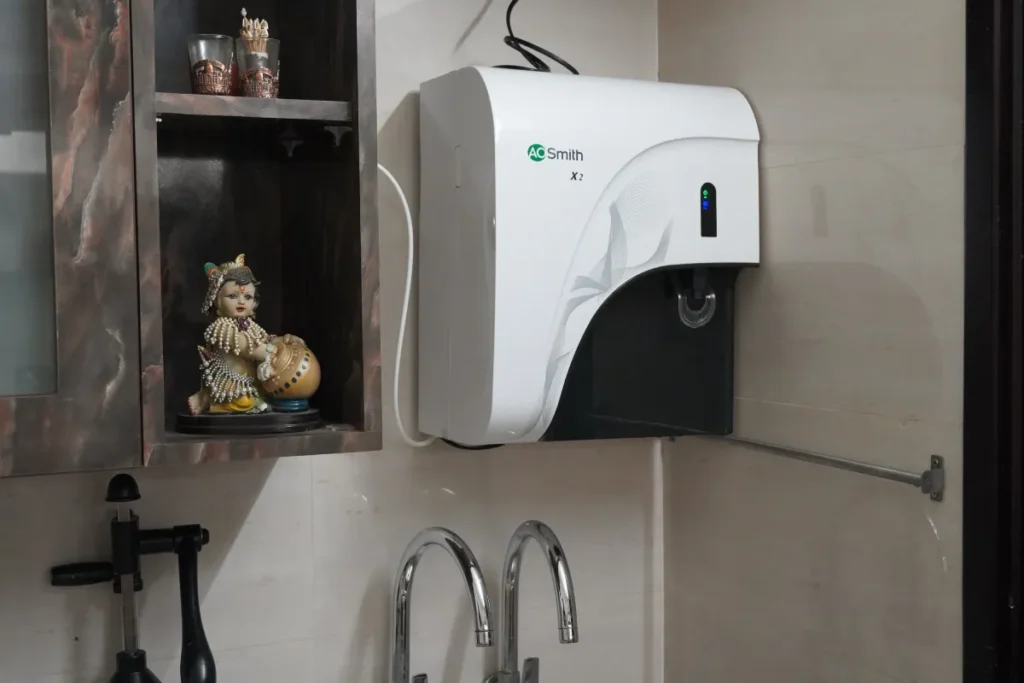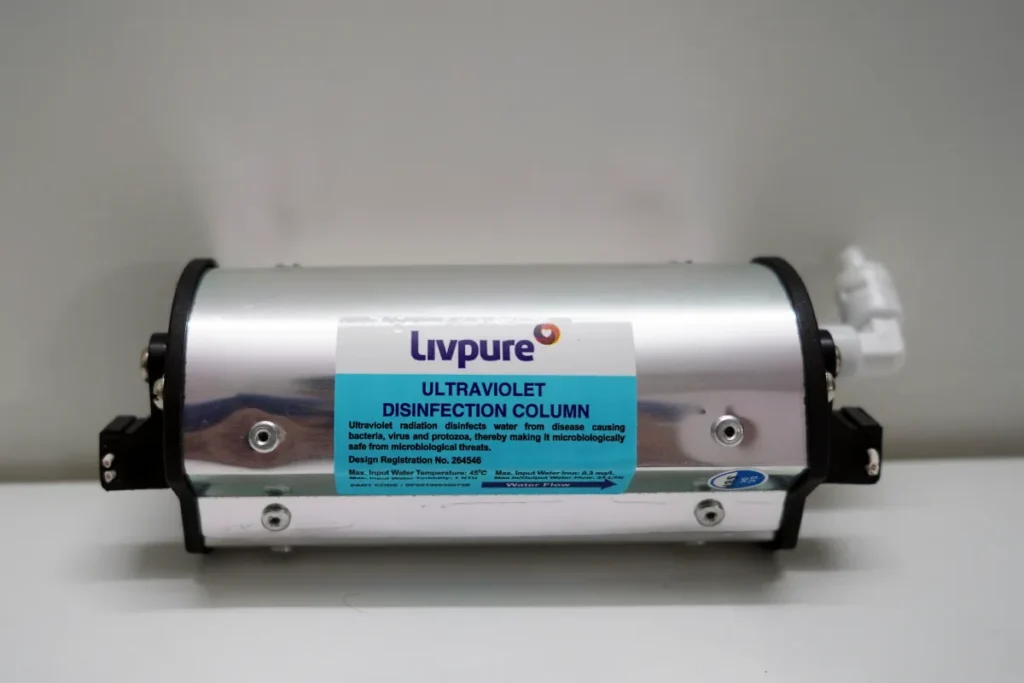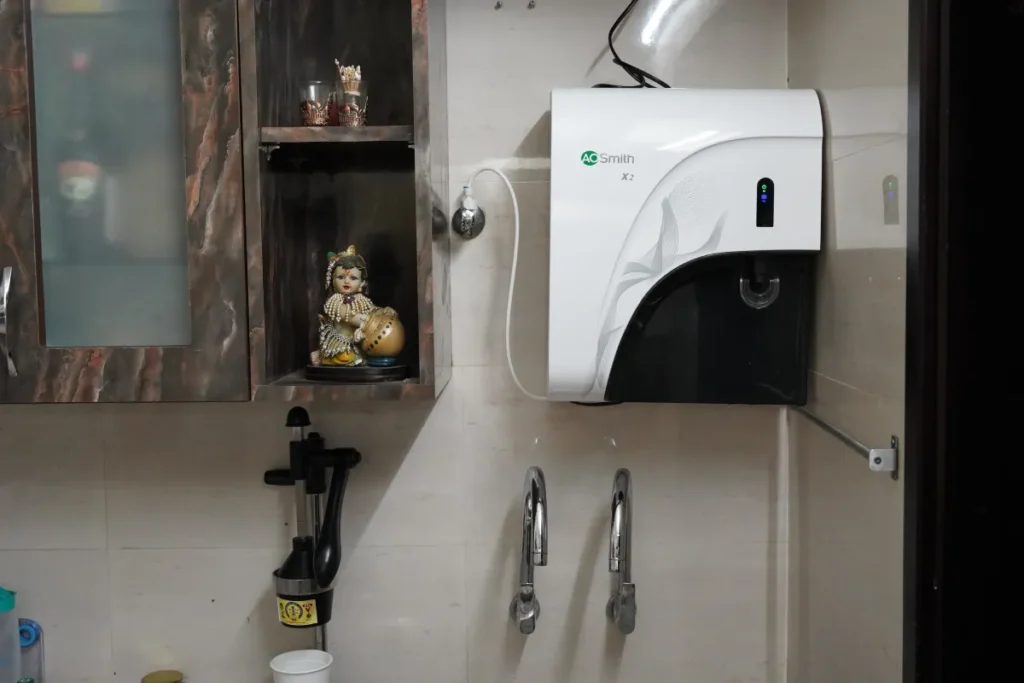An Ultraviolet (UV) water purifier kills germs, bacteria, and viruses from water to make it hygienic. Usually, UV purification is the final filtration stage after the UF and RO processes to guarantee 100% drinking water purification.
A UV water purifier uses ultraviolet radiation to kill bacteria, viruses, and other microorganisms, making the water 100% safe to consume.
Generally, we use UV water purifiers where the source water does not have significant sediment contamination.
Where is UV purification used?

UV purification is usually the final filtration stage after the UF and RO water purification process is completed. Therefore, it is recommended for use in places that receive RO-purified water from municipalities.
Many towns in India use RO purification and desalination plants to purify water before supplying it to their residents through pipes. This water does not have high TDS levels because RO purification and desalination remove heavy metal impurities and eliminate them.
The RO-purified water can become contaminated on its journey to your home. For example, leaking pipes can cause sewage water seepage to contaminate the drinking water. UV radiation kills bacteria, viruses, and other disease-causing organisms to make the water fit for consumption.
How does UV purification work?

UV purification requires water to pass through ultraviolet radiation that immobilizes and kills harmful microorganisms. Thus, it purifies the water and makes it hygienically safe for consumption.
Advantages of UV water purification
- UV water purification eliminates harmful bacteria and other microorganisms to make the water fit and hygienic for consumption. It eliminates 99.9% of microorganisms.
- UV water purification is ideal when the water has already undergone RO purification.
- Ultra-violet water purification is recommended when the TDS levels in water are less than 500 ppm.
- Compared to RO water purification, UV treatment is less expensive.
- UV water purification does not involve using chemicals for purifying water.
- The UV water purification system does not have internal moving parts. As a result, these compact systems fit into the tightest spaces.
- UV water purification does not affect the water’s color or taste.
- UV water purification is highly efficient.
Disadvantages of UV water purification
- UV purification needs electricity for its functioning. Therefore, these water purifiers cannot function without electricity.
- Ultra-violet purification does not remove all impurities. For example, it cannot handle sediment impurities, TDS, rust, pesticides, fluoride, etc.
- UV purification kills bacteria, viruses, and microorganisms but does not remove dead bodies.
- The UV light does not have a shut-off facility. Since the UV light is invisible, you cannot determine whether the unit is functioning. However, UV water purifiers have LED indicators to notify users.
- UV water purification requires pre-filtering to remove other contaminants.
UV Water Purification – Frequently Asked Questions
The water purification method depends on the source water’s TDS and other contamination levels. If the TDS levels are higher than 500 ppm, RO water purification is invariable. Otherwise, UV treatment is a better process because it can eliminate harmful microorganisms.
UV water purification does not harm RO-purified water. Instead, it kills the bacteria and viruses that escape the RO filtration process and contaminate the water. So, UV purification is essential for enhancing the hygiene quotient.
UV purification does not reduce TDS levels in the water. Instead, it eliminates bacteria and harmful microorganisms.
UV water purification kills bacteria, and so does boiling the water. Therefore, there is no need to boil UV-purified water again.
The major disadvantage of UV treatment is that the process cannot function without electricity.
UV treatment does not change the water’s taste or odor. In addition, it does not affect the pH levels or temperature of the water.
UV lamps can work for around 9000 hours. So, they require annual replacement. However, the UV light intensity reduces considerably with continuous usage.
TDS levels and Usage of UV are not related. UV can kill bacteria and viruses only, it does not alter TDS in water.
No. UV treatment does not soften hard water. You must pair a reliable water de-scaler with your UV water purification system to get hygienic, soft water.
